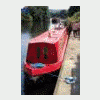Galvanic corrosion
The Galvanic Poll
57 members have voted
-
1. Do you believe Galvanic corrosion exists?
-
Yes39
-
No2
-
Yes and I have taken action against it16
-
-
2. Do you understand the basics of what it does?
-
Yes55
-
No2
-
No but I know where to find out0
-
-
3. Do you know of a boat effected by it?
-
No43
-
Yes my own2
-
Yes another boat known to me12
-
-
Recently Browsing 0 members
- No registered users viewing this page.


Featured Posts
Create an account or sign in to comment
You need to be a member in order to leave a comment
Create an account
Sign up for a new account in our community. It's easy!
Register a new accountSign in
Already have an account? Sign in here.
Sign In Now